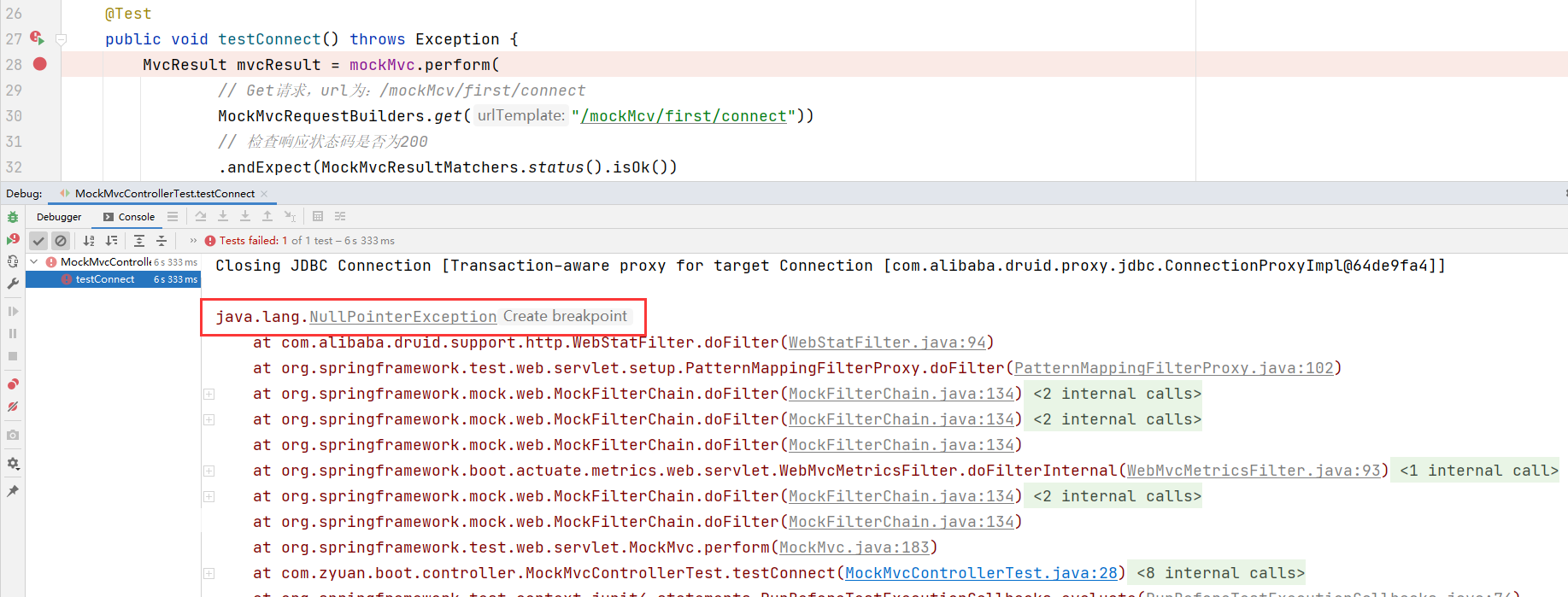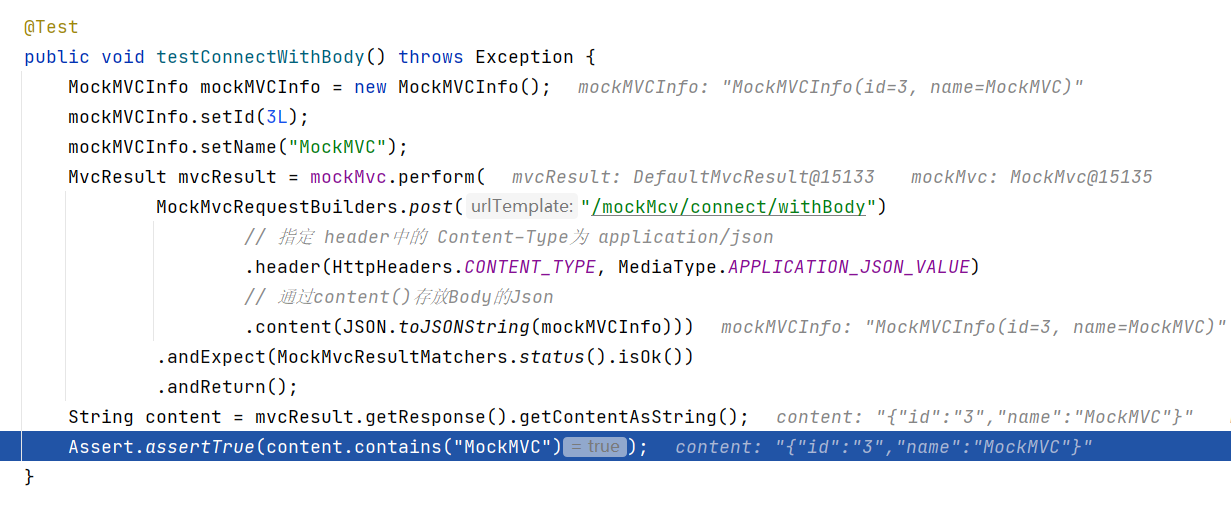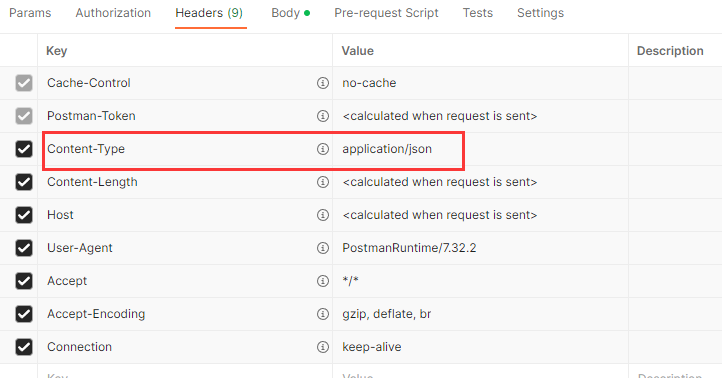MockMVC的使用
Get请求
简单示例
创建一个简单的Controller:
import org.springframework.web.bind.annotation.GetMapping; import org.springframework.web.bind.annotation.RequestMapping; import org.springframework.web.bind.annotation.RestController; @RestController @RequestMapping("/mockMcv") public class MockMvcController { @GetMapping("/first/connect") public String testConnect() { String result = "Hello MockMVC"; return result; } }
创建测试类,使用MockMVC
import org.junit.Assert; import org.junit.Test; import org.junit.runner.RunWith; import org.springframework.beans.factory.annotation.Autowired; import org.springframework.boot.test.autoconfigure.web.servlet.AutoConfigureMockMvc; import org.springframework.boot.test.context.SpringBootTest; import org.springframework.test.context.junit4.SpringRunner; import org.springframework.test.web.servlet.MockMvc; import org.springframework.test.web.servlet.MvcResult; import org.springframework.test.web.servlet.request.MockMvcRequestBuilders; import org.springframework.test.web.servlet.result.MockMvcResultMatchers; // webEnvironment = SpringBootTest.WebEnvironment.RANDOM_PORT: // 指示Spring Boot在随机且可用的端口上启动Web服务器,避免端口冲突 @SpringBootTest(webEnvironment = SpringBootTest.WebEnvironment.RANDOM_PORT) // 自动配置MockMvc和Spring IOC容器 @AutoConfigureMockMvc @RunWith(SpringRunner.class) public class MockMvcControllerTest { @Autowired private MockMvc mockMvc; @Test public void testConnect() throws Exception { MvcResult mvcResult = mockMvc.perform( // Get请求,url为:/mockMcv/first/connect MockMvcRequestBuilders.get("/mockMcv/first/connect")) // 检查响应状态码是否为200 .andExpect(MockMvcResultMatchers.status().isOk()) // 返回一个MvcResult回调对象 .andReturn(); // 获取响应文本 String content = mvcResult.getResponse().getContentAsString(); // 通过断言来验证返回是否正确 Assert.assertTrue(content.equals("Hello MockMVC")); } }
直接启动Debug启动,请求成功:

注意点
上述示例中需要注意,@SpringBootTest注解需要括号中的内容
去掉@SpringBootTest括号中的内容,运行结果:

原因:@SpringBootTest注释用于在测试与Spring Boot应用程序的集成中启用Spring上下文,如果使用默认配置,那就是Mock模式,即加载一个伪造的Web环境,其中一些内容(例如HTTP会话和重定向)不实际触发,而只是返回一个默认值。
所以在测试期间尝试模拟HTTP请求并使用不实际存在的Session时,可能会从该会话对象中出现NullPointerException。
Get带参数
controller中新加一个带参数的Get请求:
@GetMapping("/connect/withParam")
public String testConnectWithParam(@RequestParam("id") Long id, @RequestParam("name") String name) {
String result = "id:" + id + ",name:" + name;
return result;
}
测试类新增对应的测试方法:
@Test public void testConnectWithParam() throws Exception { MvcResult mvcResult = mockMvc.perform( MockMvcRequestBuilders.get("/mockMcv/connect/withParam") // 通过param()存放各个请求参数 .param("id", "1") .param("name", "MockMVC")) .andExpect(MockMvcResultMatchers.status().isOk()) .andReturn(); String content = mvcResult.getResponse().getContentAsString(); Assert.assertTrue(content.contains("MockMVC")); }
Debug启动,请求成功:

Post请求
示例
controller中新加一个带Body的Post请求:
@PostMapping("/connect/withBody")
public String testConnectWithBody(@RequestBody Map<String,String> requestBody) {
String result = JSONArray.toJSONString(requestBody);
return result;
}
新增一个Java对象存放值:
import lombok.Data; import java.io.Serializable; @Data public class MockMVCInfo implements Serializable { private static final Long serializableID = -1L; private Long id; private String name; }
测试类新增对应的测试方法:
@Test public void testConnectWithBody() throws Exception { MockMVCInfo mockMVCInfo = new MockMVCInfo(); mockMVCInfo.setId(3L); mockMVCInfo.setName("MockMVC"); MvcResult mvcResult = mockMvc.perform( MockMvcRequestBuilders.post("/mockMcv/connect/withBody") // 指定 header中的 Content-Type为 application/json .header(HttpHeaders.CONTENT_TYPE, MediaType.APPLICATION_JSON_VALUE) // 通过content()存放Body的Json .content(JSON.toJSONString(mockMVCInfo))) .andExpect(MockMvcResultMatchers.status().isOk()) .andReturn(); String content = mvcResult.getResponse().getContentAsString(); Assert.assertTrue(content.contains("MockMVC")); }
Debug启动,请求成功:

注意点
1.通过RequestBody传递值,就得使用.content()方法存放Json
2.Body中使用Json,需要在header中指定Content-Type为application/json,参考Postman:





 浙公网安备 33010602011771号
浙公网安备 33010602011771号